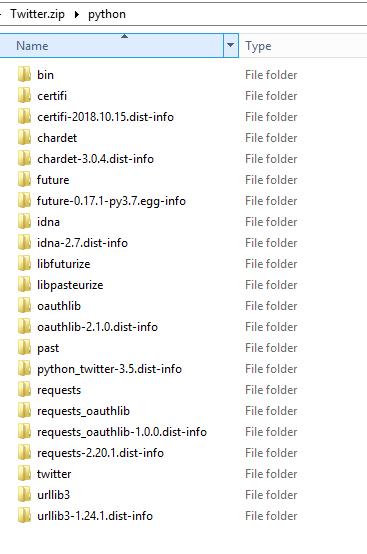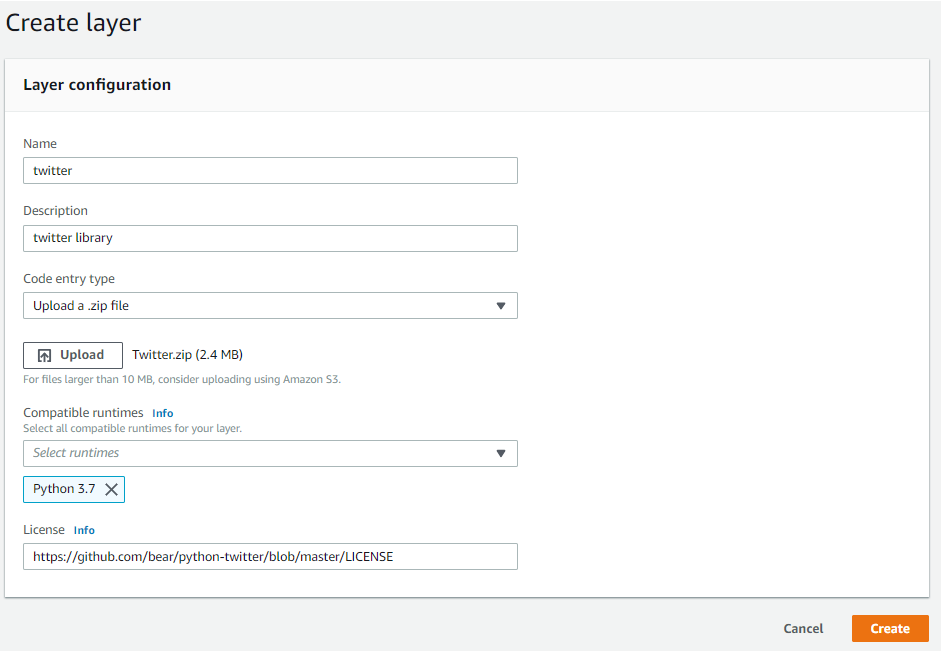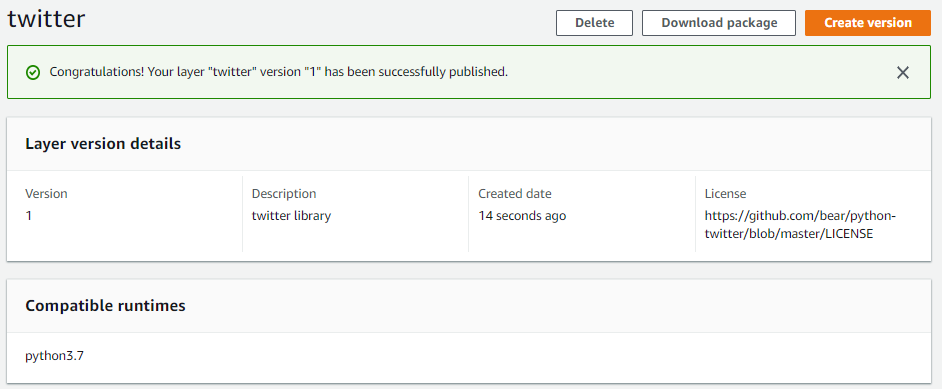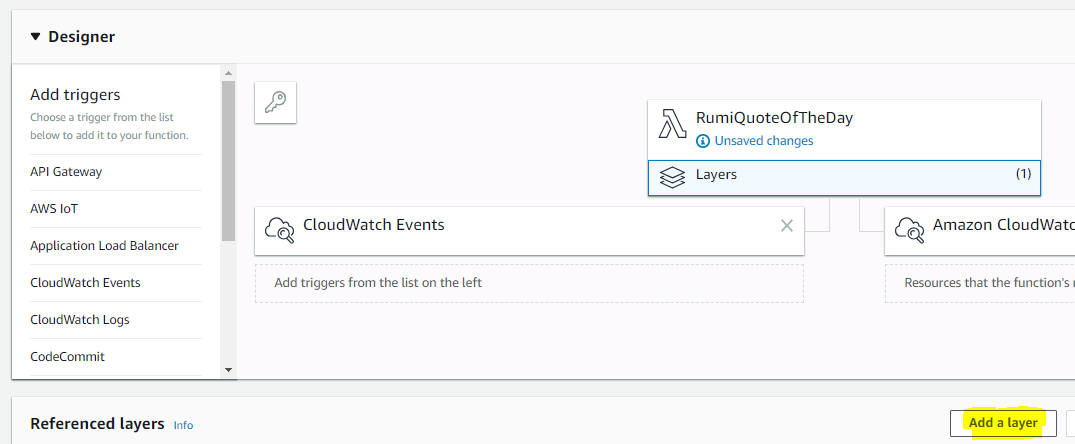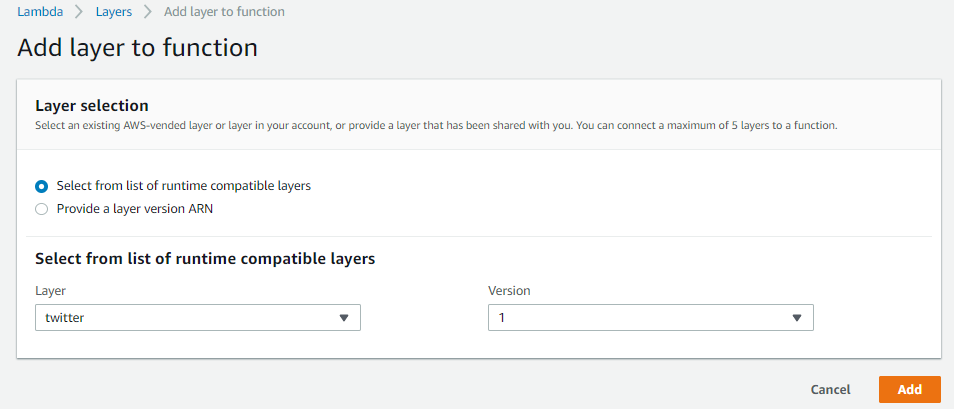How to Create an AWS Lambda Layer
AWS Lambda Layer
Introduction¶
This article will walk you through creating an AWS Lambda Layer.
What is a Lambda Layer?¶
A layer is a Zip file that contains libraries, a custom runtime, or other dependencies for your Lambda function.
Instructions¶
The process to create a Lambda layer is broken down into the following steps:
- Creating the .Zip Library
- Creating a Lambda Layer
- Adding a Layer to a Lambda Function
Step 1 - Creating the .Zip Library¶
To create a library you need to create a ZIP file of the library. You need to place the library in one of the folders that is supported by the runtime.
Link: Lambda Layer Library Configurations
For example for Python, you need to place the library in the specific python runtime folder:
Python Layer Folder Structure
The .ZIP file can be given any name. For example if you're including the twitter library, you can name it 'twitter.zip'. Here is how the .ZIP file may look:
Twitter Layer Folder
Step 2 - Creating a Lambda Layer¶
Log in to AWS Management Console and go to the Lambda service. Click on Layers on the left hand side and select Create Layer.
AWS Lambda Layers
Create a Layer
Fill out the Create Layer form, you will need to upload the .ZIP file created in Step 1 of this article. You will need to provide a link of the license information for the library.
Layer Created
Step 3 - Adding a Layer to a Lambda Function¶
Once you've created the Lambda Layer, you need to add it to a Lambda Function. To do this, open up the Lambda Function. Click on Layers and click on Add a Layer.
A Lambda Function
Select your layer and version of the layer. You can also provide a layer version ARN to select a public layer.
Add layer to Function
Now that you added the layer to your function, it should be listed under 'Referenced layers'.
Summary¶
This article introduced layers, showed how you can create a layer and reference it in a Lambda Function. These layers can be used for various Lambda functions. There is a concept of Merge order and Public Layers that I didn't touch on in this article. We will explore these options in future articles.


